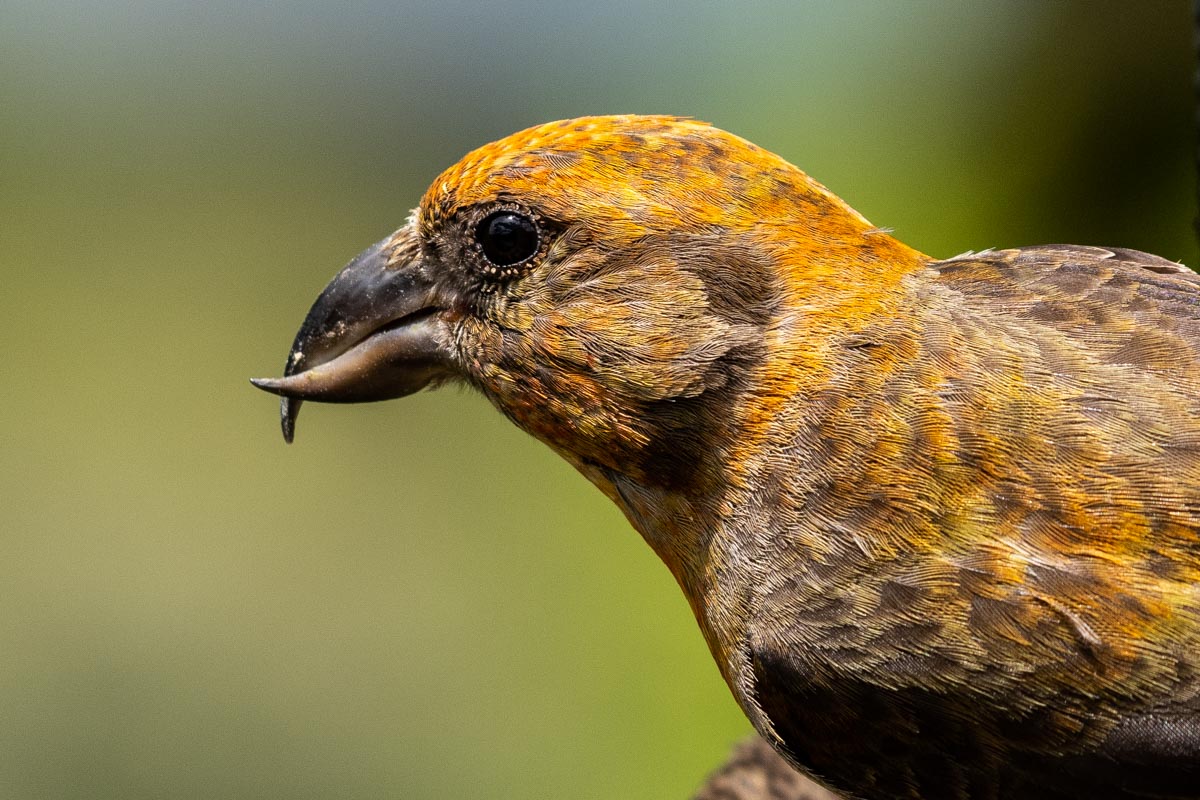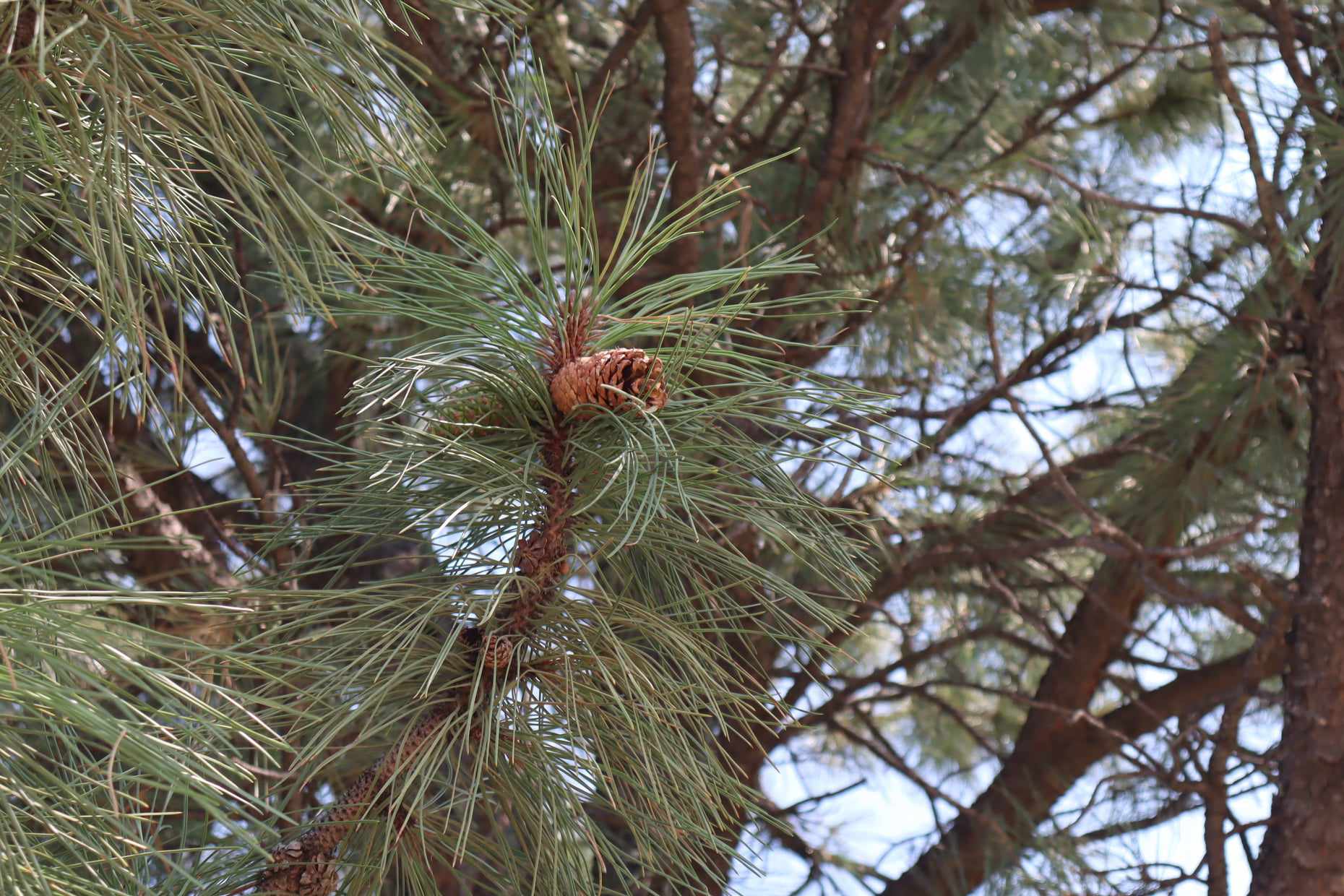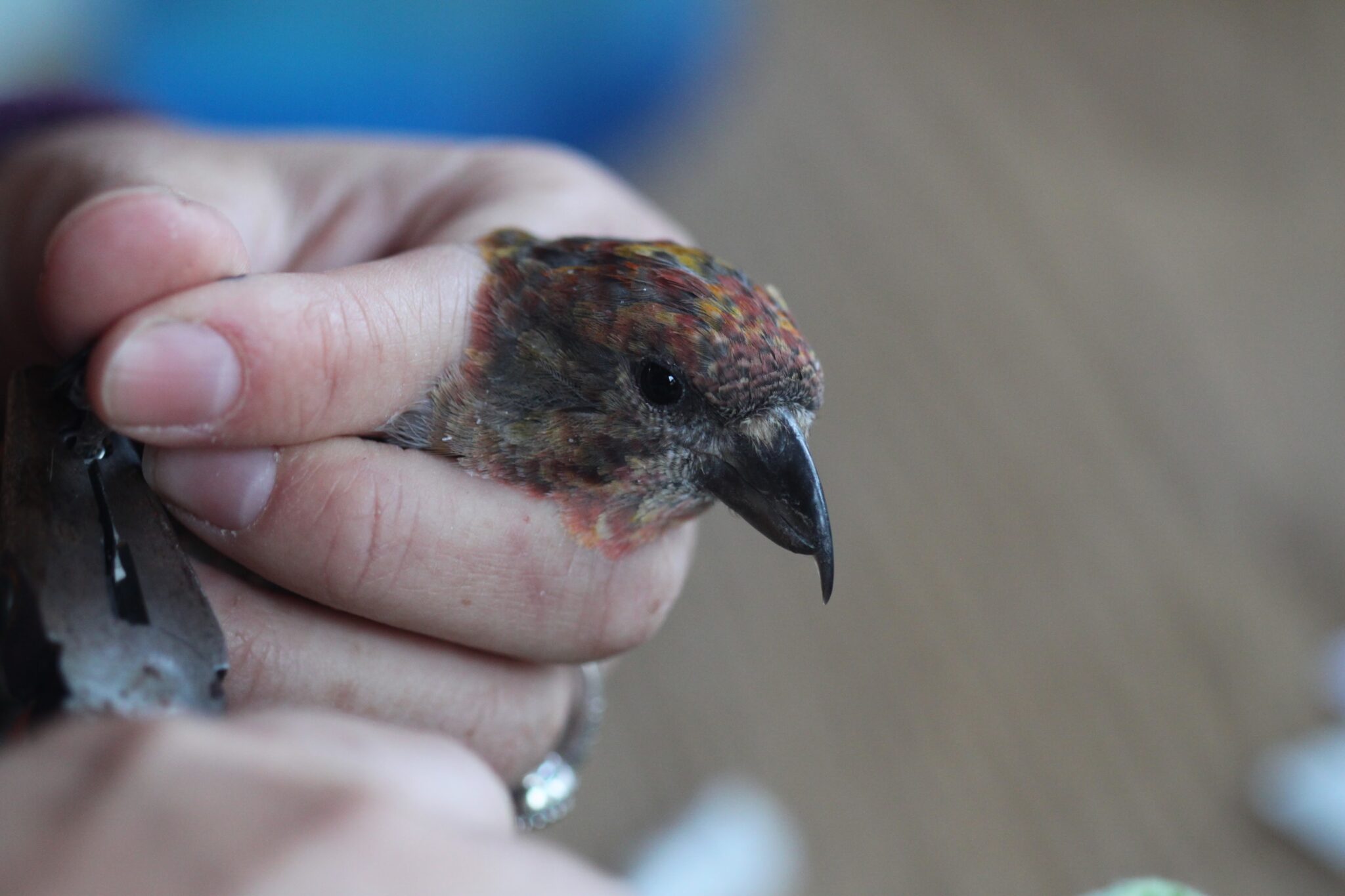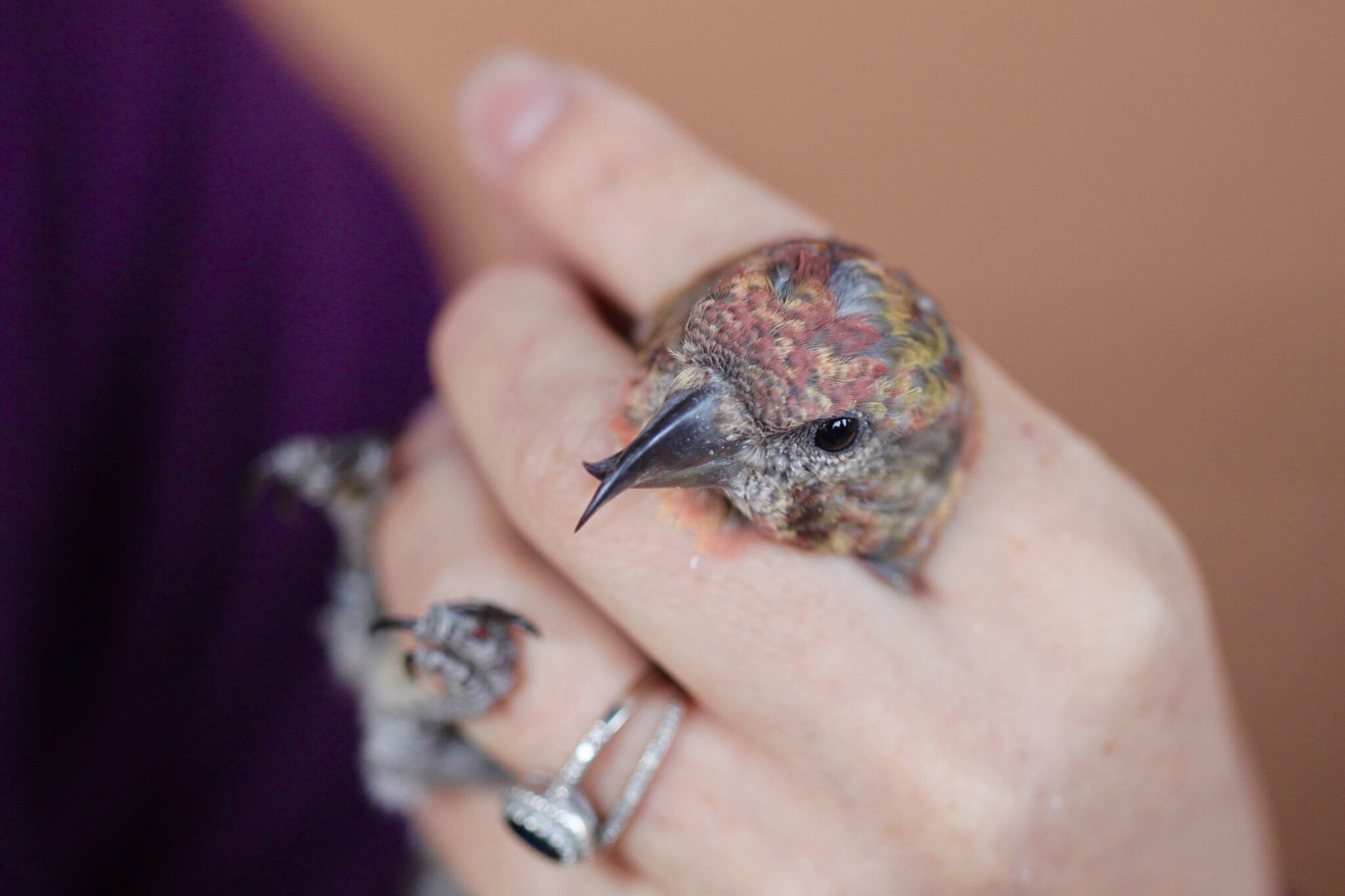The Red Crossbill, Loxia curvistra, is a peculiar finch found among the spruces, firs, pines, and hemlocks of coniferous woodlands. The Red Crossbill is one of three of the 17 finch species in North America that have an unusual, but spectacular beak. Per their name, the crossbill has a crossed bill. You may be thinking, what does having a crossed bill have to do with the journey of a crossbill? Everything. Their specialized bills make them reliant on pinecone crops.
- Overlapping crossed bill used for prying open pinecones. Photo by Justin Haag, Nebraskaland
- Ponderosa Pine cones ready for a visiting crossbill. Photo by Delanie Bruce
Crossbills are truly a nomadic, wandering species. Unlike other bird species that migrate south for the winter and north for the summer, crossbills follow no true migration pattern. Crossbills will move away from their typical range during times of low pinecone crops, this movement is called an irruption. Irruptions usually happen every couple of years, when crossbills move out of boreal forests of Alaska and Canada in search for more food in any direction. Therefore, tracking crossbills exact journeys is rather difficult since they can travel in any direction in search of an abundance of food.
One way to track a general trend of where Red Crossbills are and where they have been over multiple seasons is by utilizing the community science platform, eBird. Created and managed by the Cornell Lab of Ornithology, eBird data is used to document bird distribution, abundance, habitat use and trends over time. While this gives a good, overview perspective of the movements of Red Crossbills as an entire population, there are ways to get individual perspectives, through bird banding.
Bird banding is the study of birds to gain a better understanding of species migration routes, timings and movements, plus range limits and average life spans. Individual birds are harmlessly trapped and fitted with a metal band, so that if the bird is recaptured or found elsewhere, scientists will know when and where it was first banded. All of the bird banding data for the United States and Canada is housed with the United States Geological Survey Bird Banding Laboratory. Since 1960, over 16,000 Red Crossbills have been banded in the United States, 977 banded at our Wildcat Hills bird banding station alone.
- Red Crossbill held safely in “banders grip” being banded at Wildcat Hills bird banding station.
- Look at all of those colors in the crown of this Red Crossbill!
Now, let’s dive down into individual crossbills to see where they have journeyed post-banding. Bird Conservancy’s bird banding stations in Nebraska are only operational during the fall migration, to us a crossbills “starting point” is when it is first banded at either Wildcat Hills or Chadron State Park. Since 2007, 980 Red Crossbills have been banded between both Nebraska stations, of which only ONE has been recovered from the Wildcat Hills station. This crossbill was first banded among the Ponderosa Pines of Wildcat Hills on October 4, 2011 and a year and a half later it had journeyed from the high plains of western Nebraska to where it was recovered on March 17, 2013 near the San Juan mountains 10 miles east of Durango, CO.
Of the over 16,000 Red Crossbills that have been banded since 1960, only 48 of these birds have been recaptured at locations other than their original banding site. One crossbill was encountered over 1,500 miles away from its original banding site! First banded near south Quinault, WA this crossbill traveled over 1,500 miles, likely up the coast of British Columbia, over the span of two years all the way to Mount Jumbo Trail, just a few miles south of West Juneau, AK. A few other crossbills have been encountered again over 1,000 miles from their original banding site, with the majority encountered again being 200 miles or less away.
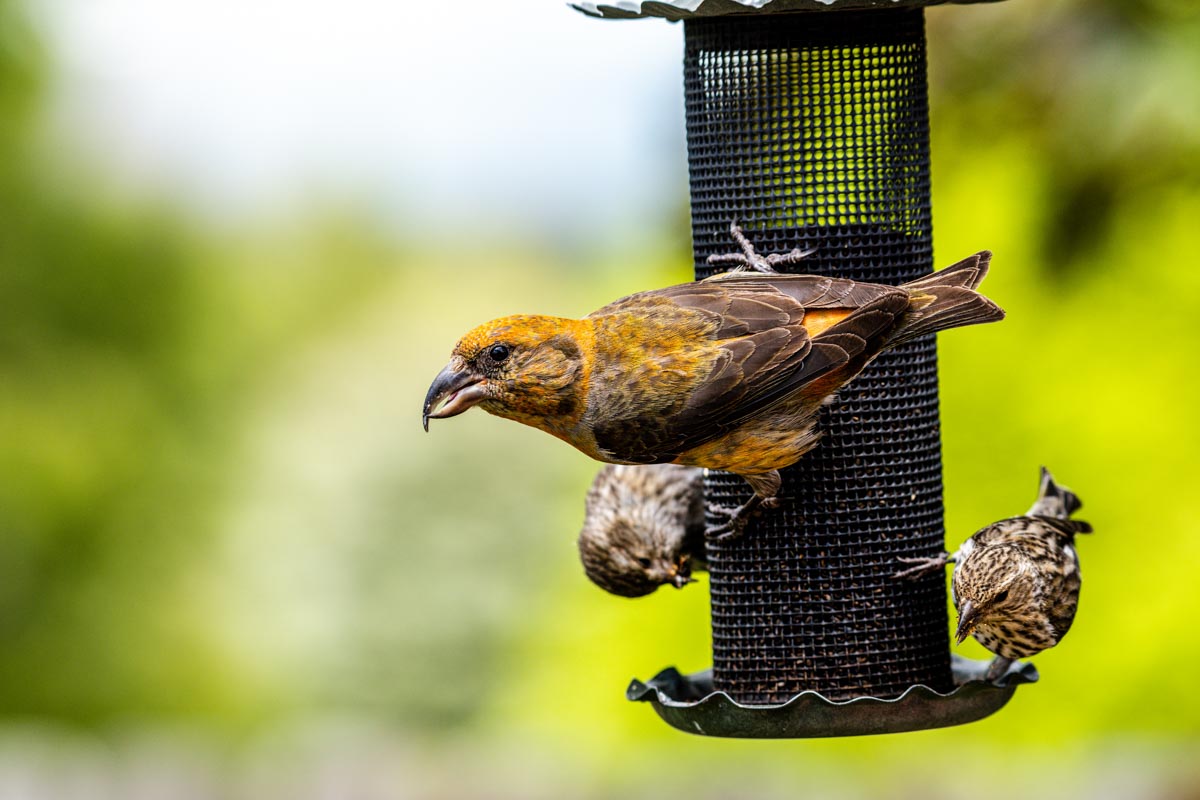
Red Crossbill visiting a bird feeder at Wildcat Hills Nature Center, south of Gering, NE. Photo by Justin Haag, Nebraskaland.
We may not know the exact journey of this irruptive and sporadic species, but with the help of bird banding data and reported sightings from birders across North America, we can put together a near complete picture of where Red Crossbills are going based on where they have been. Cone crops from fir, pine, spruce and hemlock trees are the best indicator of where the crossbills are and where they will be throughout the year. Fall 2022 was a slow season for Red Crossbills banded at Wildcat Hills, with only one, which may indicate good cone crops up north. Stay tuned for this fall’s bird banding season to see if the Red Crossbills are staying up north or if they are heading south to the Ponderosa Pines of the Pine Ridge regions of Nebraska.
 Delanie Bruce is the Education Manager in Nebraska. Click here to learn more about our Nebraska programs!
Delanie Bruce is the Education Manager in Nebraska. Click here to learn more about our Nebraska programs!


